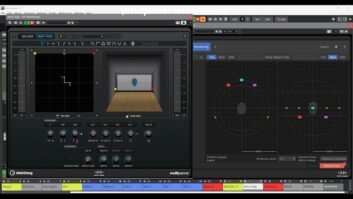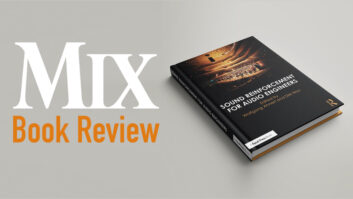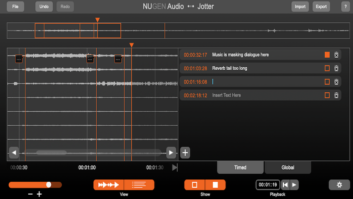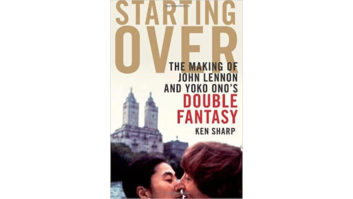I entered the graduate journalism program at Indiana University in 1986, about seven or eight lifetimes ago in technology years. In the summer of 1988 I joined Mix, walking into a dynamite editorial team led by David Schwartz, Blair Jackson and George Petersen. The next 15 or 20 years were the go-go days for technology and “new media,” with at least two Internet booms and busts before mobile even caught hold. Mix averaged 228 to 248 pages a month and stories ran long; lots of stories. It was a great time to be living in the Bay Area, raising a couple of amazing daughters, and writing about music, recording and technology.
And then things changed. We all know that. How could they not? Publishing and music—or, in a larger sense, information and entertainment—are massive industries that are completely dependent on distribution. So, when bandwidth opened up in a real way, and paper and plastic were replaced by bits and bytes, starting with downloads then morphing into streaming, a whole lot of things started to change. And Mix started to shrink.
It’s been heartbreaking, but not at all surprising. When I walk trade show floors visiting longtime friends, or sit down to dinner with some new ones, inevitably there’s an uncomfortable pause where someone says something to the effect of, “Man, I remember when Mix used to be fat…” To which I typically respond, “So do I. And I’m just happy to be here today with you fine folks!”
All of which brings me back to the headline, “This One’s a Reader.” Ed Gubar, a professor-mentor back in journalism school and something of a rogue in the department, had an uncanny sense for good writing and good stories. I was exposed to John McPhee, Tracy Kidder, Jose Luis Borges and so many others, to go along with a few previous favorites like Tom Wolfe, Lester Bangs and the Good Doctor, Hunter S. Thompson. Ed would often hold up some magazine with an article in the syllabus, or some unsuspecting student’s classroom assignment, and say, “This one’s a reader!”
It took a semester or two to figure out what he meant. After all, isn’t the goal of all journalism to be read? But over time, I realized that what he was really saying is that some stories demand attention, demand the reader’s engagement. Of course the story on what is going on in Afghanistan or Washington demands attention, same as the announcement of a new compressor or the release of a new record. But a “reader” is one that you want to make time for, one where you make sure the kids are asleep, sit down in a favorite chair, pour a 12-year-old-sherry-oak-casked Macallan, and settle in to the story.
The making of “Blue Suede Shoes,” a Carl Perkins classic that 65 years ago introduced the line “Go, Cat, Go!” is a reader. A few weeks back, David McGee, a friend, colleague and former Rolling Stone editor who had been reading a bunch of Mix Classic Tracks lately, proposed the idea of running an excerpt from his definitive 1996 biography, Go, Cat, Go! The Life and Times of Carl Perkins, The King of Rockabilly.
Well… yeah! Then he sent me iPhone jpegs of a handful of pictures that he still had in his archives, including the rarely seen 8×10 Colin Escott photo of Perkins and Johnny Cash, circa 1956, with the former leaning in while he dusts off a blue suede shoe. Damn! That’s Gold with a capital-G! David made a call, the generous Mr. Escott said, “Sure. Just give me what you think is a fair price,” and a couple of weeks later, it’s all right there on the cover.
I can’t recall that Mix has ever featured a Classic Track on the cover, despite the fact that since its introduction more than 30 years ago, it remains our most popular column. I am, however, absolutely sure that we haven’t run an article stretching across seven pages in a long, long time. That’s a lot of real estate these days. And everybody and their sister has told me for years that people don’t read any more. They want bits. The headlines. The Who, What, Where, When, How. Then move on. All that’s true, but I will forever cling to the belief that most people will sit still if you’re telling them a good story.
Here, you won’t read about the mics used on the drums at Sun Studio that December day in 1955, and there’s nothing at all about the dimensions of the studio or the speakers in the control room. But you will learn a lot about the rise of rockabilly and the birth of rock ‘n’ roll, and about Johnny Cash in the Army, getting ready for a Saturday night dance near Munich when he first heard about “the suedes.” You’ll find new connections to the legendary Sam Phillips, ‘that pretty Elvis,’ to quote Carl, and the on-the-floor lyrics change that brought us Go, Cat, Go! Spoiler alert: Take 2, out of the three, was the keeper.
So much information is now just a Google search away, from plug-in choices on a favorite record to 3D walkthroughs of world-class studios. I love that! Mix has bits and bytes and pocket-sized information, as well. We still have product reviews and project profiles, along with big virtual events and a healthy online presence.
But when I get the blank pages each month before editorial, art and production come together, I still get a kick out of clicking on a Word document and thinking, as it comes on the screen, This One’s a Reader.







